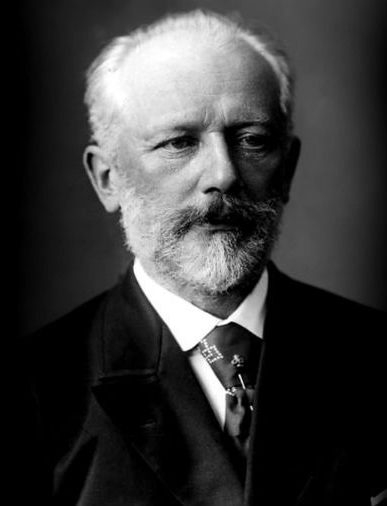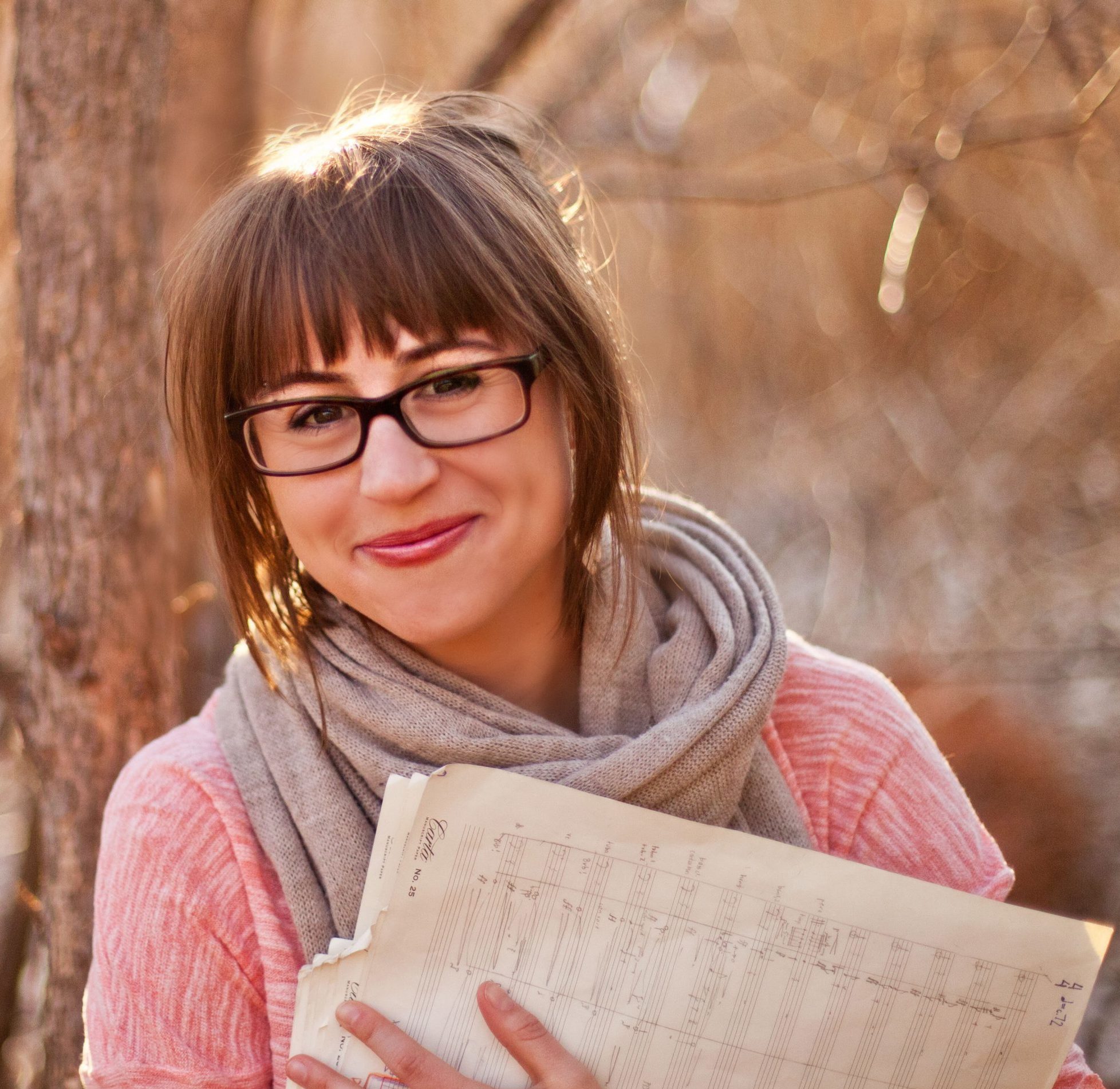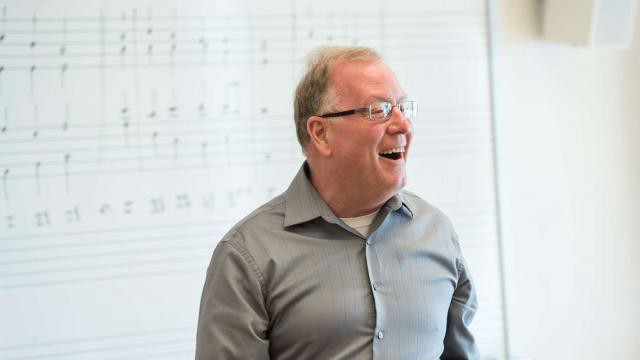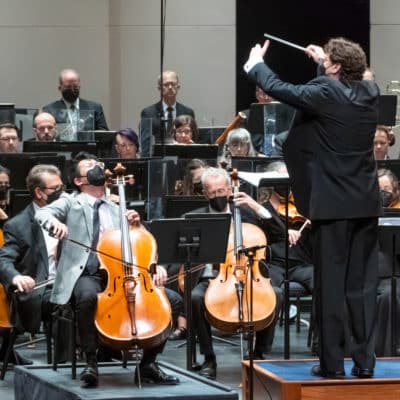Peter Ilyich Tchaikovsky (1840–1893)
Symphony No. 5 in E Minor, Op. 64
 On May 19, 1888 Tchaikovsky wrote his brother Modest that “now, little by little, with difficulty, I am beginning to squeeze the symphony from my benumbed brain.” He squeezed throughout the summer, and on August 14 sent this succinct message to his patroness Nadezhda von Meck: “Symphony finished.” On November 5 Tchaikovsky conducted the premiere with the St. Petersburg Philharmonic, garnering mixed reviews that ranged from an anonymous critic’s respectful notice (“The first two movements make the greatest impression … their themes are very beautiful and developed with complete mastery”) to a gleefully malicious mauling by the ever-waspish César Cui (“The finale distinguishes itself with its vulgarity and blather.”) Tchaikovsky himself harbored some doubts, but by early 1888 he could express his relief that “I no longer find the symphony horrible and have started liking it again.”
On May 19, 1888 Tchaikovsky wrote his brother Modest that “now, little by little, with difficulty, I am beginning to squeeze the symphony from my benumbed brain.” He squeezed throughout the summer, and on August 14 sent this succinct message to his patroness Nadezhda von Meck: “Symphony finished.” On November 5 Tchaikovsky conducted the premiere with the St. Petersburg Philharmonic, garnering mixed reviews that ranged from an anonymous critic’s respectful notice (“The first two movements make the greatest impression … their themes are very beautiful and developed with complete mastery”) to a gleefully malicious mauling by the ever-waspish César Cui (“The finale distinguishes itself with its vulgarity and blather.”) Tchaikovsky himself harbored some doubts, but by early 1888 he could express his relief that “I no longer find the symphony horrible and have started liking it again.”
It has long been an article of faith that the Tchaikovsky Fifth is a programmatic symphony, although the only actual documentary evidence to that effect is a scribbled passage in an 1887–88 Tchaikovsky notebook, discovered and translated in 1937 by Nicholas Slonimsky:
Complete resignation before Fate, or, which is the same, before the inscrutable predestination of Providence. Allegro (I) Murmurs, doubts, plaints, reproaches against XXX. Shall I throw myself in the embraces of Faith??? … a wonderful programme, if I could only carry it out.
Nobody has a clue as to what Tchaikovsky actually meant by ‘XXX’, so naturally a steeplechase of supposition has ensued. The odds-on favorite for the win is that the Xs are a coded reference to Tchaikovsky’s sexual orientation, with his gambling addiction trailing by a nose. One guess being as good as another, ‘XXX’ can be interpreted to mean just about anything—or nothing at all.
In fact, the Fifth as program symphony has been largely debunked. That lessens neither its dramatic impact nor the persuasiveness of the narrative thread that runs through its four movements. A vital component in that thread is the ‘motto’ theme that appears at the very opening and recurs throughout in various guises. First heard in paired clarinets, the initially moody motto theme gives way to the first movement proper, a considerably brighter affair that bears compelling witness to Tchaikovsky’s inherent Classicism, exhibiting as it does the rock-solid structural integrity more associated with Haydn, Mozart, and Beethoven than with the late Romantics.
The second-place Andante cantabile contains one of Tchaikovsky’s most beloved melodies, a horn solo that has maintained its inherent dignity even in the face of endless popularizations. For some, this movement not only represents the work’s heart center, but is also Tchaikovsky’s finest slow symphonic movement. It is followed by a distinctly melancholic waltz that uses as its primary theme a tune that Tchaikovsky picked up on a visit to Florence. Then comes the finale, in which the motto theme kicks off a majestic processional that eventually gives way to a fiery Allegro. Towards the end, the motto theme returns yet again—but now in vivid major mode, thereby concluding the symphony in a resplendent glow of triumph.
Katherine Balch
Illuminate, for Three Voices and Orchestra (World Premiere)
 “A libretto that depicts many shades of femininity,” writes Katherine Balch of her new song cycle Illuminate, “or at least, resonates with my own associations and experiences of this term/idea.” Balch has assembled texts from four of her favorite female poets— Sharon Olds, Adrienne Rich, Alejandra Pizarnik, and Sappho via Anne Carson’s translations, interweaving them with lines from a fifth, seemingly-improbable, source: Arthur Rimbaud’s Les Illuminations. “One of the reasons Rimbaud’s poetry resonates with me is that there are always these seemingly offhanded but critical references to the perspectives of women and children throughout his work,” says Balch. “It’s almost as if he is describing the world through their lens.”
“A libretto that depicts many shades of femininity,” writes Katherine Balch of her new song cycle Illuminate, “or at least, resonates with my own associations and experiences of this term/idea.” Balch has assembled texts from four of her favorite female poets— Sharon Olds, Adrienne Rich, Alejandra Pizarnik, and Sappho via Anne Carson’s translations, interweaving them with lines from a fifth, seemingly-improbable, source: Arthur Rimbaud’s Les Illuminations. “One of the reasons Rimbaud’s poetry resonates with me is that there are always these seemingly offhanded but critical references to the perspectives of women and children throughout his work,” says Balch. “It’s almost as if he is describing the world through their lens.”
Think of Illuminate as a celebration of friendship, an expression of joy in the unique perspectives of the poets as well as the performers. But don’t expect a straightforward setting of the texts; rather, the lines are broken apart, or sung in special ways, stretched out, or combined in various ways within a lavish orchestral texture that includes a varied array of percussion instruments played with an equally varied array of techniques. (Even the vocalists get involved.) Over the course of five movements, Illuminate explores its themes via a framework of the cycle of the seasons, beginning and ending with the spring.
Thus Illuminate opens with growth and abundance (“O sweetness / when her lute sings”), spring in all its sweet promise, lutes and lyres and bell towers, drums and dancing. The summer that follows (“I embrace the summer dawn / I recall the wind”) conjures up heat and mugginess, but also abundant beauty—flowers, pastures, birds, and angels—capped with an orchestral interlude depicting a torrential summer storm.
Autumn wetness and waning light (“In a puddle”) prepare for the isolation of winter, when all seems frozen but life nonetheless slumbers within (“Quand le monde / I’m not sure how old I was”). This is the time of coming of age, for the unbearable awkwardness of puberty. “Trying to talk to the other kids / Through the agency of the monster I shuffled / Around as” writes Sharon Olds. But all things change, and winter gives way once again to spring (“O sweetness / a wild patience”), to sweetness, to continuation, to Adrienne Rich’s “sounds and visions.”
“I hope the piece will be heard as a joyful outpouring,” writes Balch, “because that’s what I feel when I think about these texts, the women they represent to me, and the women who will be singing them.”
Program Annotator Scott Foglesong is the Chair of Musicianship and Music Theory at the San Francisco Conservatory of Music, and a Contributing Writer and Lecturer for the San Francisco Symphony. He also leads the California Symphony’s ground-breaking music education course for adults Fresh Look: The Symphony Exposed.
3/11/20: The health and safety of our patrons and our musicians is paramount. Following updated guidelines released by Contra Costa Health Services regarding COVID-19, the Lesher Center has cancelled all events for the next two weeks, and we regret to announce that the FATE AND FUTURE concerts this weekend, March 14 & 15, are therefore cancelled. For more information, read the letter from Executive Director Lisa Dell.



